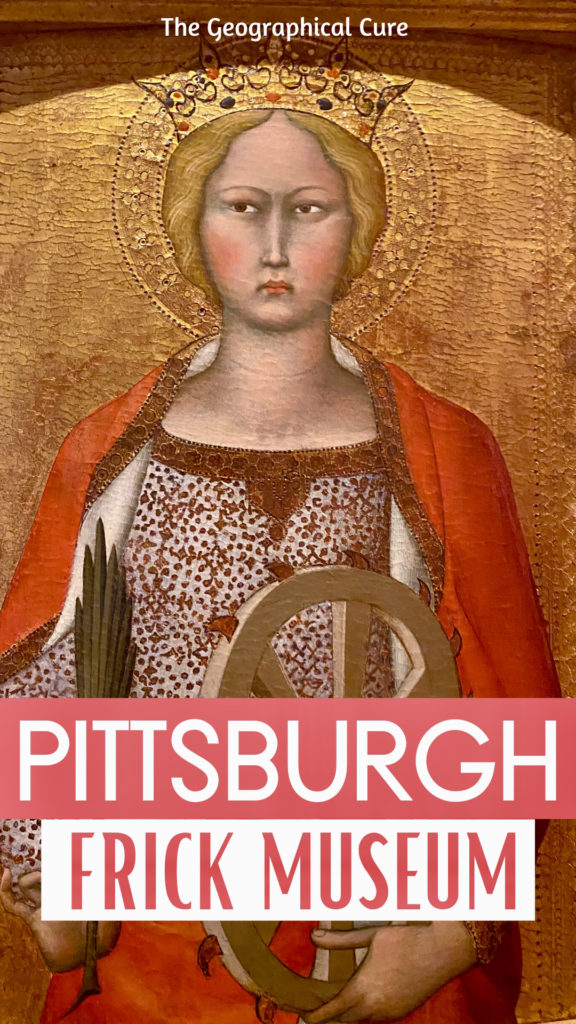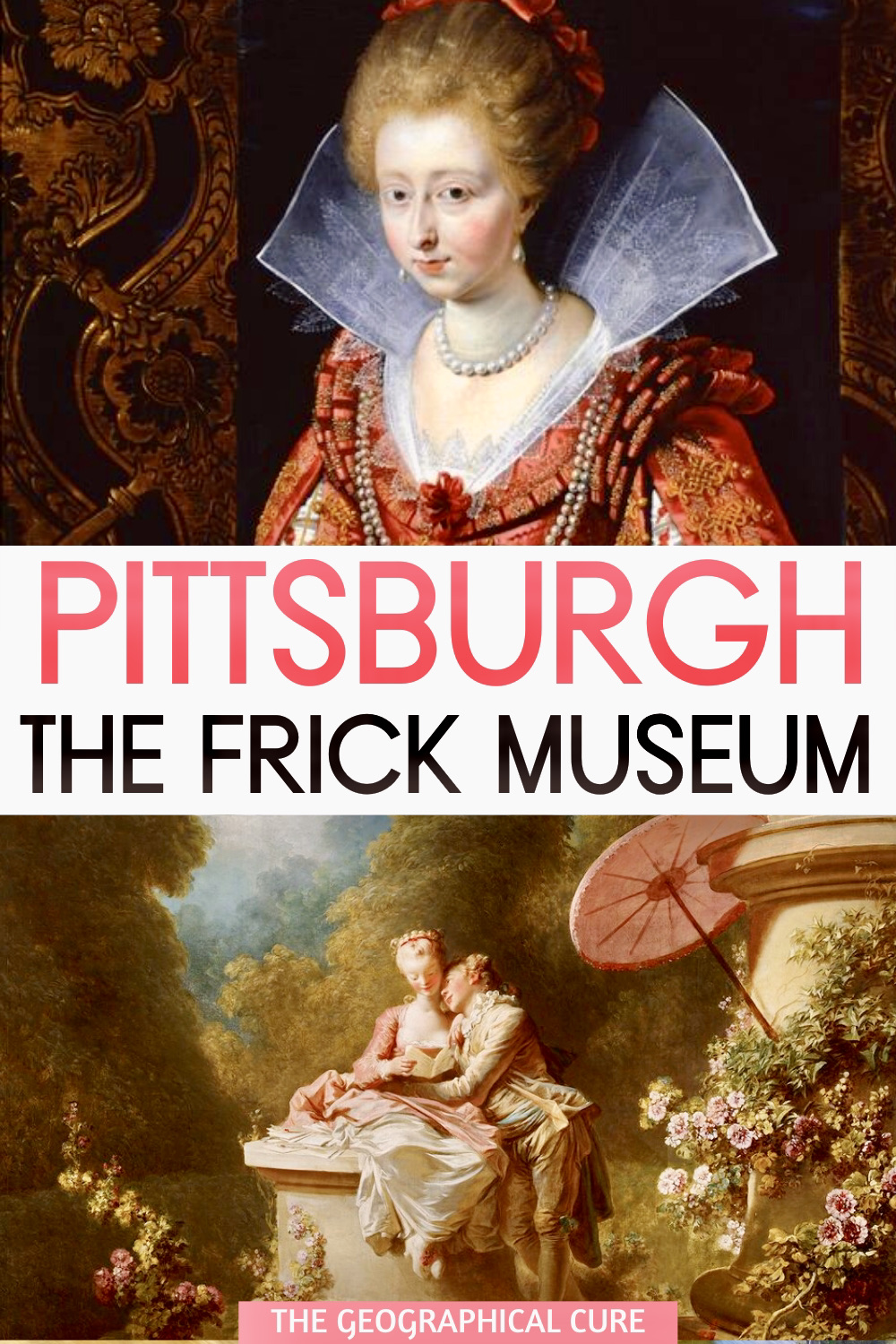Looking for some things to do in Pittsburgh? If you’re an art lover or history buff, the Frick Pittsburgh should be on your Pittsburgh bucket list!
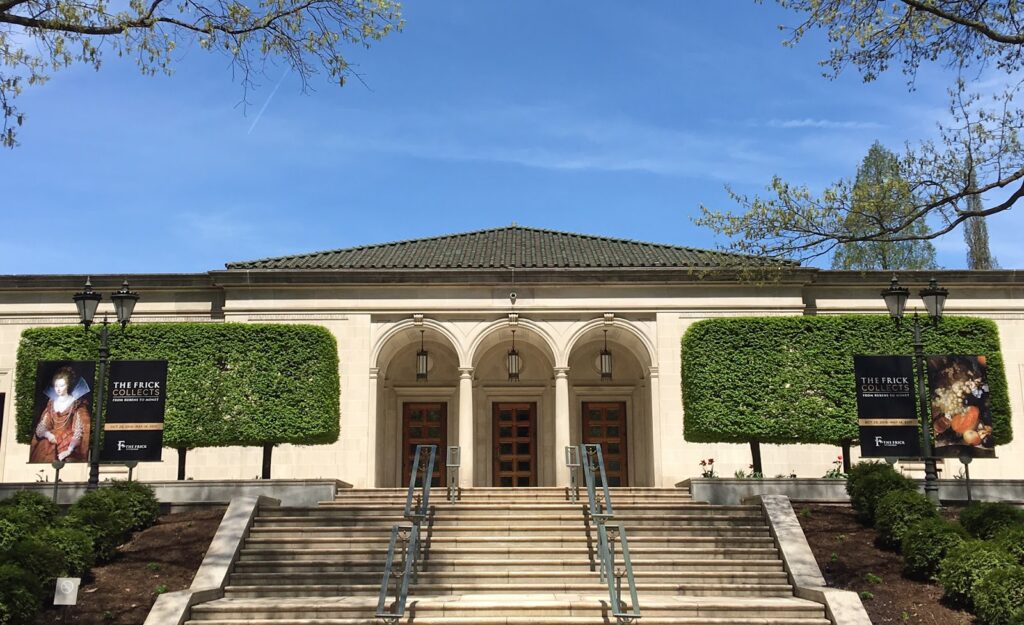
The Frick Pittsburgh is five acre cluster of historic buildings and museums in Pittsburgh’s Point Breeze neighborhood. The Frick is a unique complex, skillfully combining art, history, and nature in one go.
The Frick Art Museum houses the personal art collection of Helen Frick, the daughter of Henry Frick. The Clayton House was the home of Helen and her Henry. It features fine and decorative art from the Gilded Age.
The Frick complex also include a working greenhouse, gardens, a playhouse, the Car and Carriage Museum, a visitor’s center, and cafe.
In this Frick guide, I give you an overview of what to see at the Frick Pittsburgh complex. And I identify and describe some of the Frick’s must see fine art masterpieces.
READ: Guide to the Frick Collection in New York City
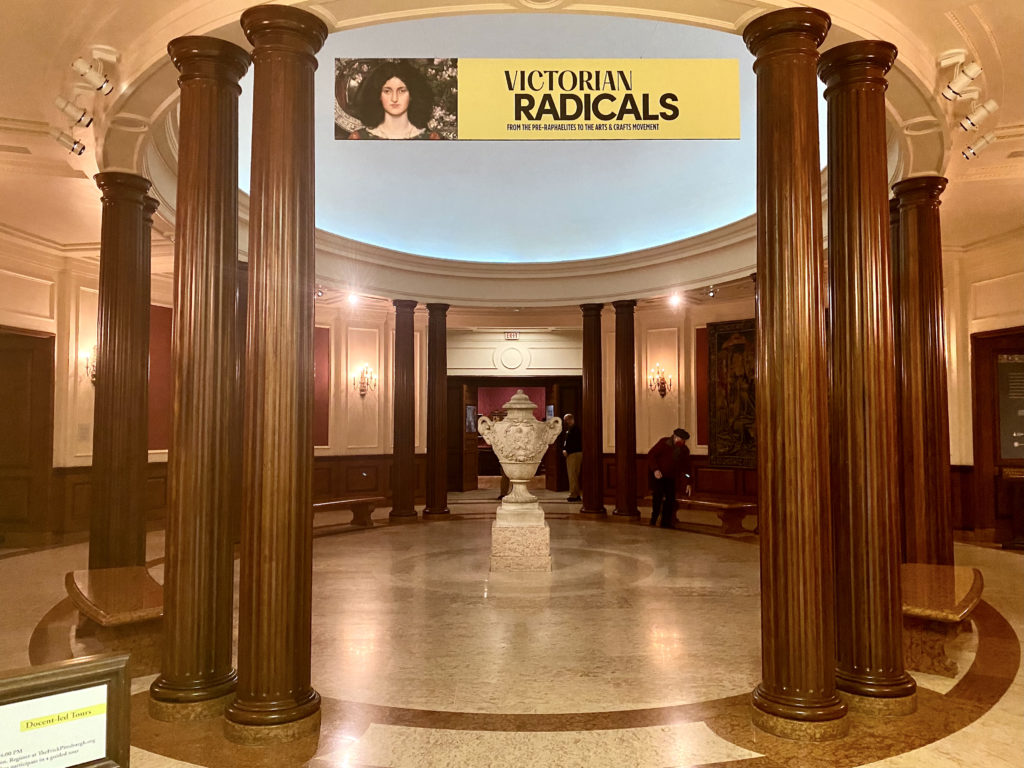
About The Frick Pittsburgh
The collection at Frick Pittsburgh is the combined legacy of Henry Clay Frick and his daughter Helen Clay.
Henry Clay Frick was a Pittsburgh industrialist, philanthropist, and avid art collector. After his collaboration with Andrew Carnegie, Frick became one of the richest “robber barons” in the United States.
Helen Frick was Henry’s youngest daughter. She grew up alongside her father’s growing art collection.
On his death, she inherited more than $400 million in today’s dollars. She may gave been the richest unmarried woman in America.
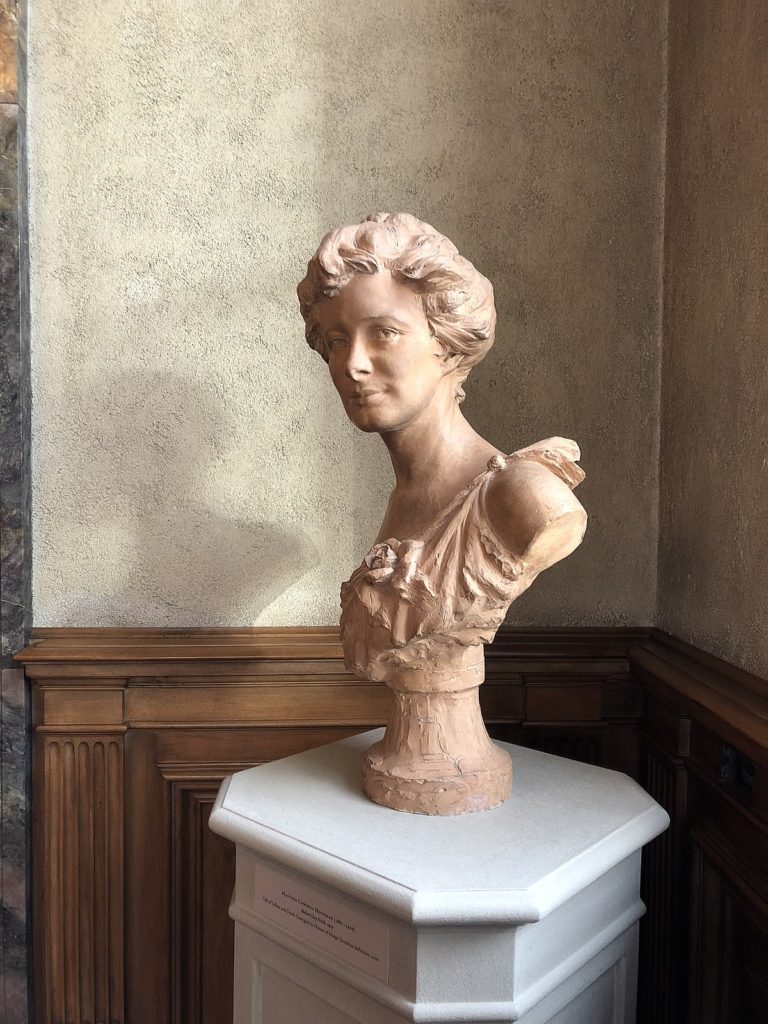
Like her father, Helen was highly intelligent and driven. Helen considered her father a hero. She dedicated her life to preserving his legacy. But she had cultural ambitions of her own.
Helen founded the Frick Art Reference Library. She worked closely with the University of Pittsburgh, establishing the Frick Fine Arts Building.
She was also instrumental in converting the family’s home in New York City into the world class Frick Collection.
Helen opened the Frick Art Museum in Pittsburgh in 1970 to showcase her personal collection. The museum also displays early acquisitions from Frick’s bachelor days.
Helen died at age 96 in 1984. She left an endowment to restore her family’s home and to turn the buildings into the Frick center. After a 4 year, $6 million renovation project, the Clayton House opened to the public in 1990.
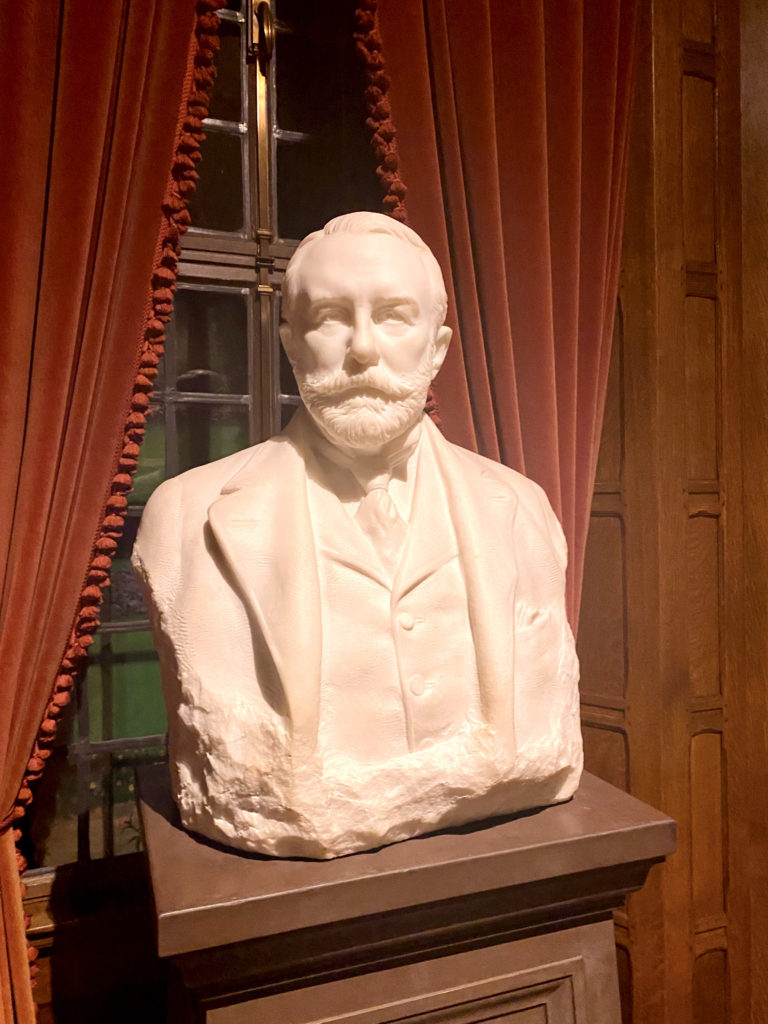
Guide To The Frick Pittsburgh: What To See
1. Overview of the Frick Art Museum
Though it’s a small museum, the Frick Art Museum houses some significant pieces of art.
Some works were amassed by Henry Frick during his early collecting days. In particular, he collected some early Chinese ceramics and Barbizon school paintings.
But the bulk of the Frick collection is the result of the connoisseurship of his daughter Helen. It’s a quirky personal collection. Helen was particularly interested in Sienese early Renaissance panel painting and French 18th century painting.
The most important works are in the Italian Gallery. There are some rare devotional works, likely produced in response to the Black Death that devastated Europe.
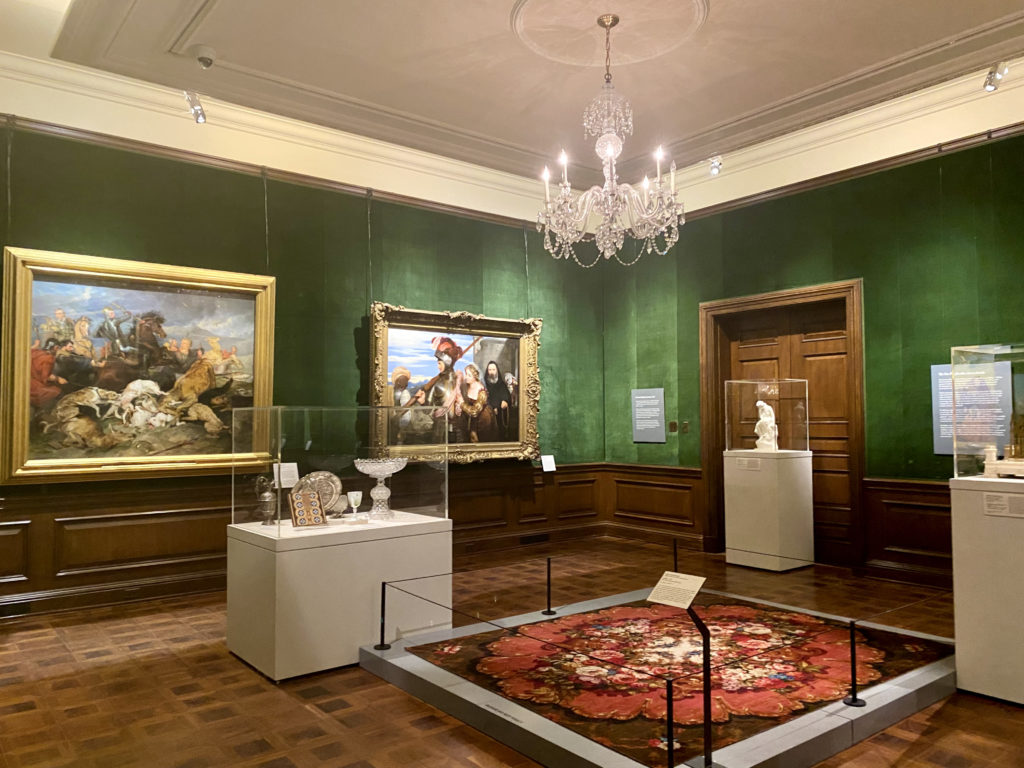
I confess I didn’t used to like all the gilding in medieval pieces like these. But they’ve grown on me the more I’ve learned about the Renaissance.
The Green Gallery houses the museum’s collection of French painting. The decor was designed to complement that collection.
The room has Florentine silk velvet walls, crystal chandeliers, and a parquet floor. There’s a treasure trove of Rococo paintings and some fine examples of French furniture of the period.
One of the things I like best about the Frick is that it has some stand out temporary exhibitions. They feature art and artists from the Renaissance to the present. In the last year, I’ve attended exhibitions on Frida Kahlo and the Victorian Radicals.
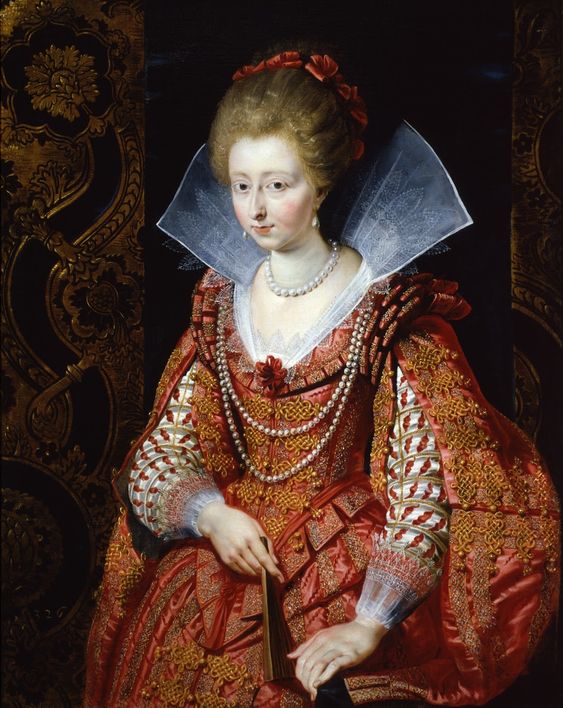
2. Frick Art Museum Highlights
Here are some masterpieces you shouldn’t miss at the Frick Pittsburgh Museum.
Rubens, Portrait of Charlotte-Marguerite de Montmorency
This Rubens portrait is the Frick’s most famous and valuable painting. Rubens was a courtly painter of the 17th century. He fused Flemish Realism with Renaissance ideas, and added a dollop of sensuality.
This beautiful Rubens portrait depicts the recently-married Princess of Conde. At age 16, the young woman was being pursued by King Henri IV of France. To avoid his ardor, she was quickly married off to nobleman from Brussels. And this portrait shows off the marriage.
This portrait has Ruben’s trademark luminous skin tones, drama, and glowing colors. The princess is depicted in a intricate gown, beautifully rendered. Her hands look especially elegant.
The painting isn’t signed by Rubens. But there is documentary evidence that he is the artist.
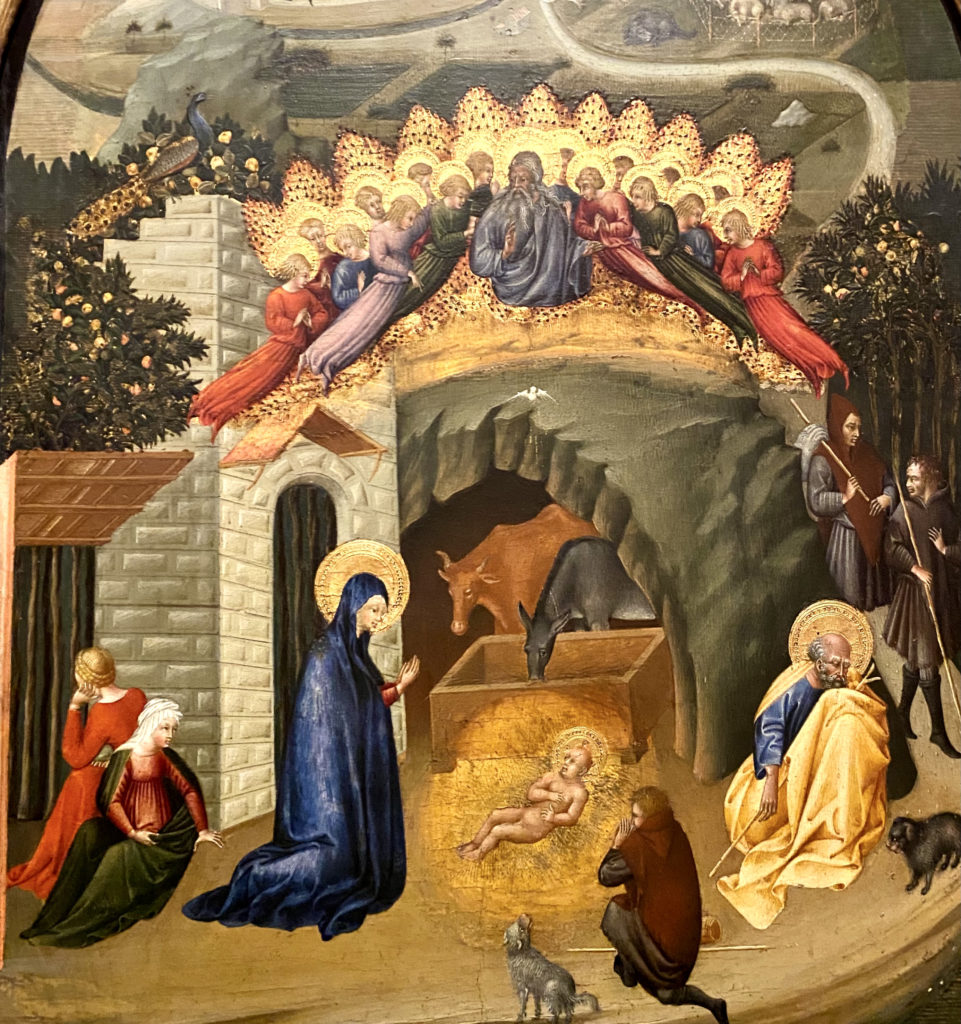
Giovanni di Paolo, Nativity
The Sienese artist Giovanni di Paolo was known for his imaginative compositions, miniaturist technique, and pictorial storytelling. He worked as the same time as the artist Sasseta, also represented in the Frick collection.
Nativity depicts the Christmas story. The painting tells the story of Christ’s birth and hints at his future arrest and death.
A dove-like figure represents the Holy Ghost. Above the child is a gilded vision of God and a bevy of angels. The cave represents both Christ’s birthplace and his tomb.
READ: Art Masterpieces of Tuscany
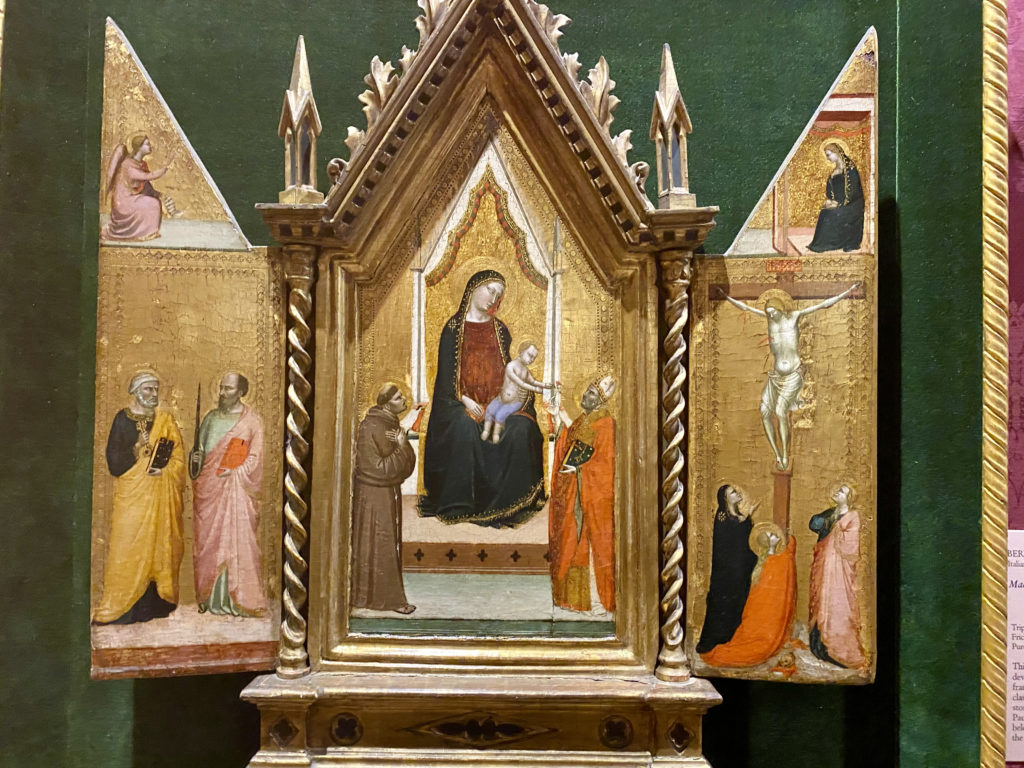
Bernardo Daddi, Madonna and Child
This is a small three paneled work by early Renaissance artist Bernardo Daddi. It was likely designed for private devotion.
The Florentine artist was known for his sense of color. He also combined an interest in humanism with a talent for decorative embellishment.
In this triptych, there’s an annunciation scene with Gabriel telling Mary she’s pregnant and a crucifixion scene. You see saints with their traditional symbols.
In the central panel, the Virgin is enthroned and draped in lavish fabrics. There’s a strong, architectural structure.
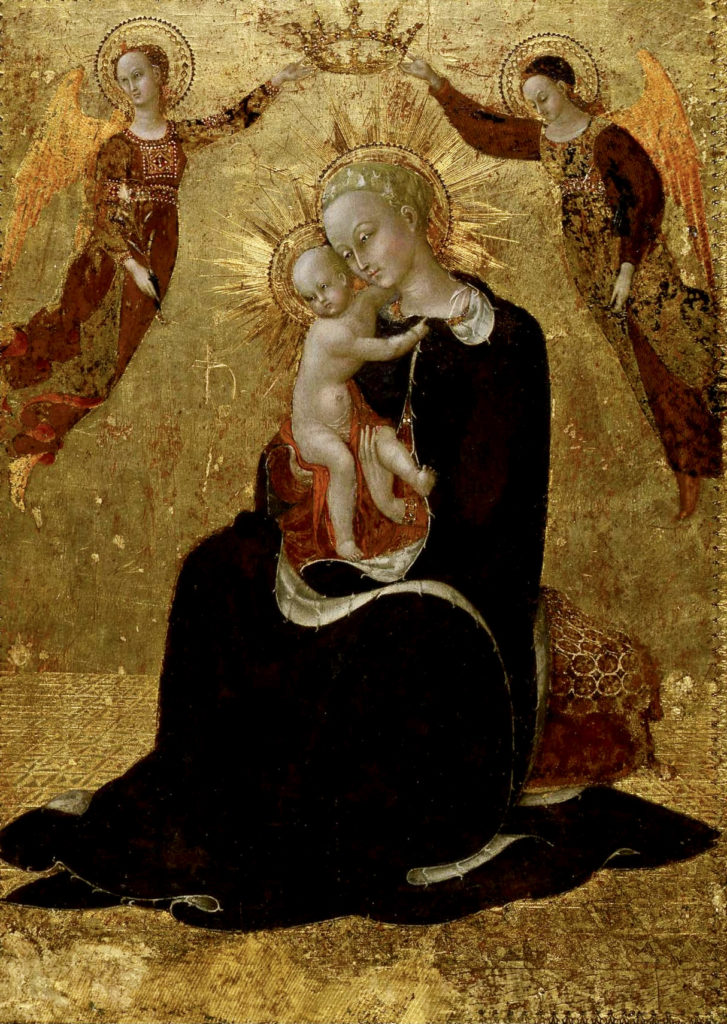
Sasseta, Virgin of Humility
This is a beautiful painting that was created after the Black Death, which killed 50% of the population of Siena. Sasseta was experimenting with a new naturalism.
The artist is know for using precious materials and elegant figures. And the painting has a jewel-like surface.
This type of composition is called a Virgin of Humility because Mary sits on a cushion instead of being enthroned.
The delicate faces in the painting are sweet and tender. Mary’s hand cradles Jesus, as she lifts him a bit closer.
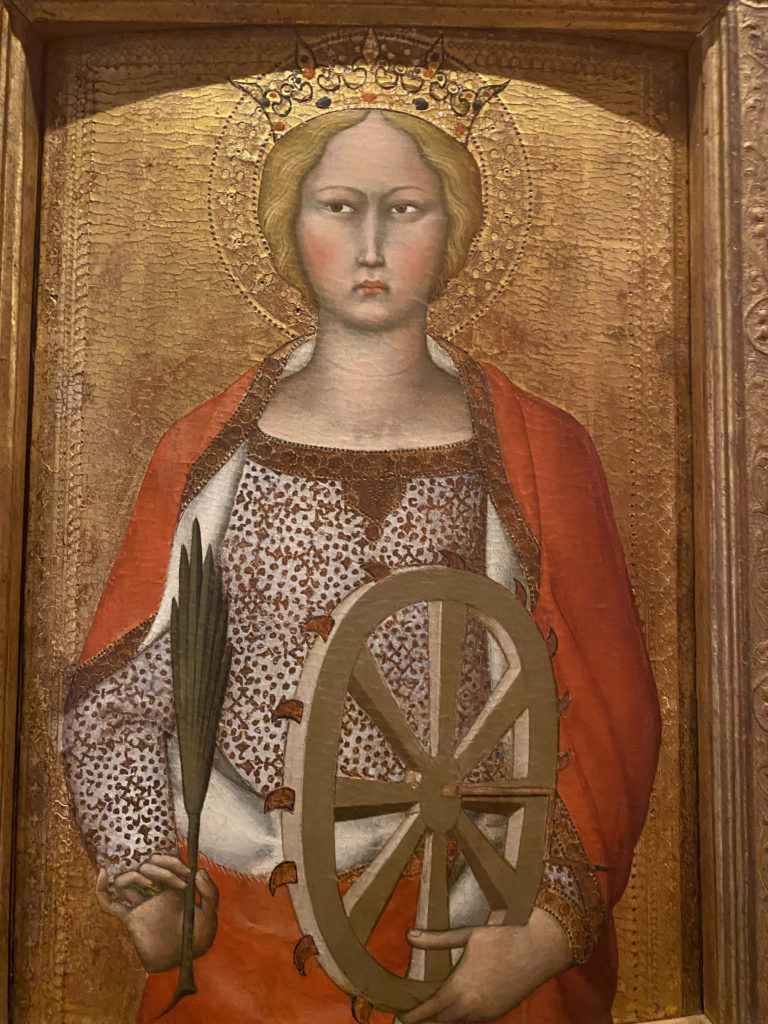
Vanuccio, St. Catherine of Alexander
Saint Catherine was a popular subject for Renaissance artists. Catherine was the daughter of the governor of Alexandria. She publicly rebuked the Emperor Maxentius for his cruelty.
The emperor organized a debate between her and his 50 best philosophers. Catherine won. Her reward?
She was tortured on a spiked wheel. Legend holds that the wheel shattered at her touch. That having failed, Catherine was beheaded. She later became a popular saint and important virgin martyr.
This Vanuccio portrait shows a women with an intense expression. Catherine stares brazenly at the viewer, with the spiked wheel in hand and a halo on her head. It’s the wheel that was broken, not her.
The crown and halo are rendered in exquisite detail. This painting was likely part of large polyptych that was destroyed.
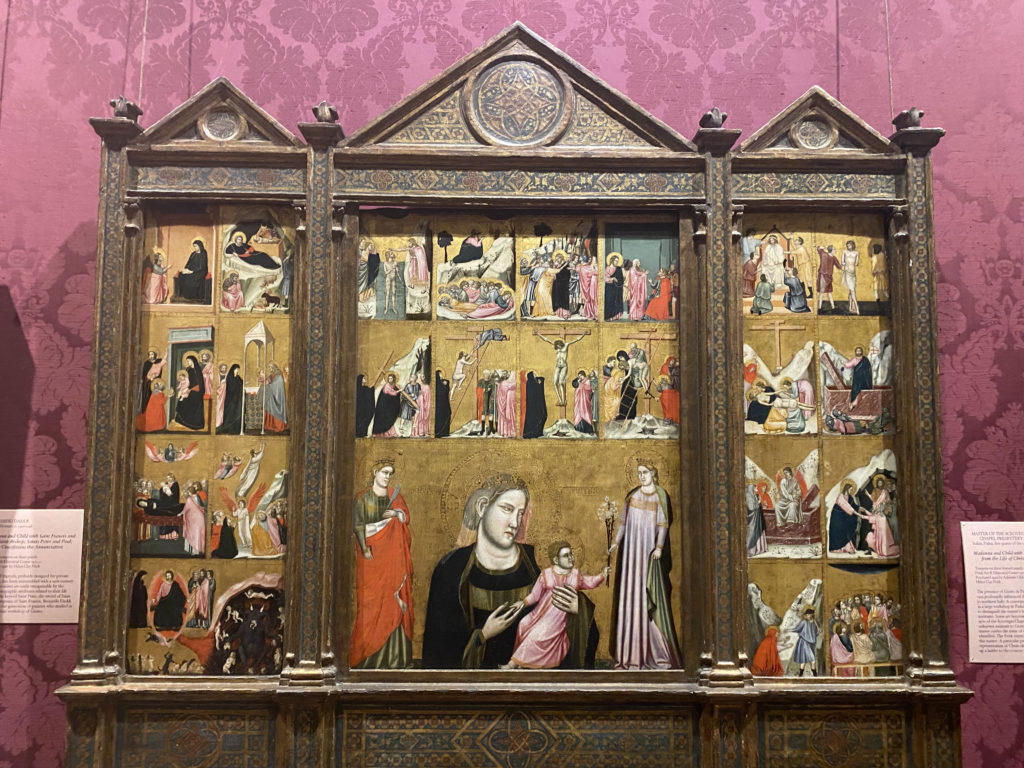
Madonna and Child With Two Saints
Giotto was arguably the best painter of the 14th century. His masterpiece are the frescos in the Scrovegni Chapel, painted in 1303-05. Giotto had a profound influence on the evolution of Renaissance painting.
This Frick triptych is attributed to a member of Giotto’s workshop. He worked alongside Giotto in Padua.
Like the chapel, the triptych depicts details of the life of Christ. They are arranged like pages from an illuminated manuscript. The smaller scenes surround a central image of the Madonna and child with two saints.
You see classic scenes like the annunciation, the last supper, the crucifixion, the deposition, etc. An especially poignant scene is Christ climbing up the ladder to meet his death.
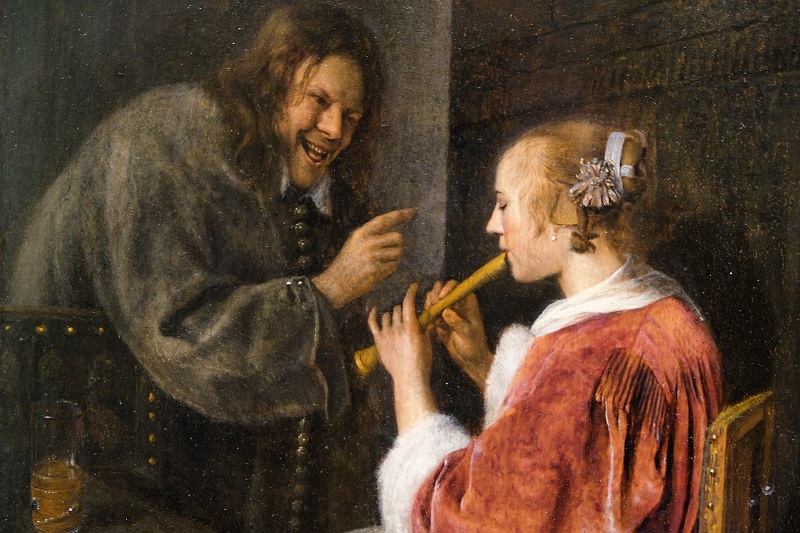
Jan Steen, The Music Lesson
Dutch artist Jan Steen is known for his keenly observed and humorous paintings, which are impeccably rendered.
This fine panel paintings depicts a common subject at the time — a private music lesson or performance. These compositions typically have overtones of romance and seduction.
This piece is known for the animated expression on the man’s face. The subjects in this painting are portraits of Steen and his wife Margaretha. Steen often placed his family members in his tales of comedy and morality.
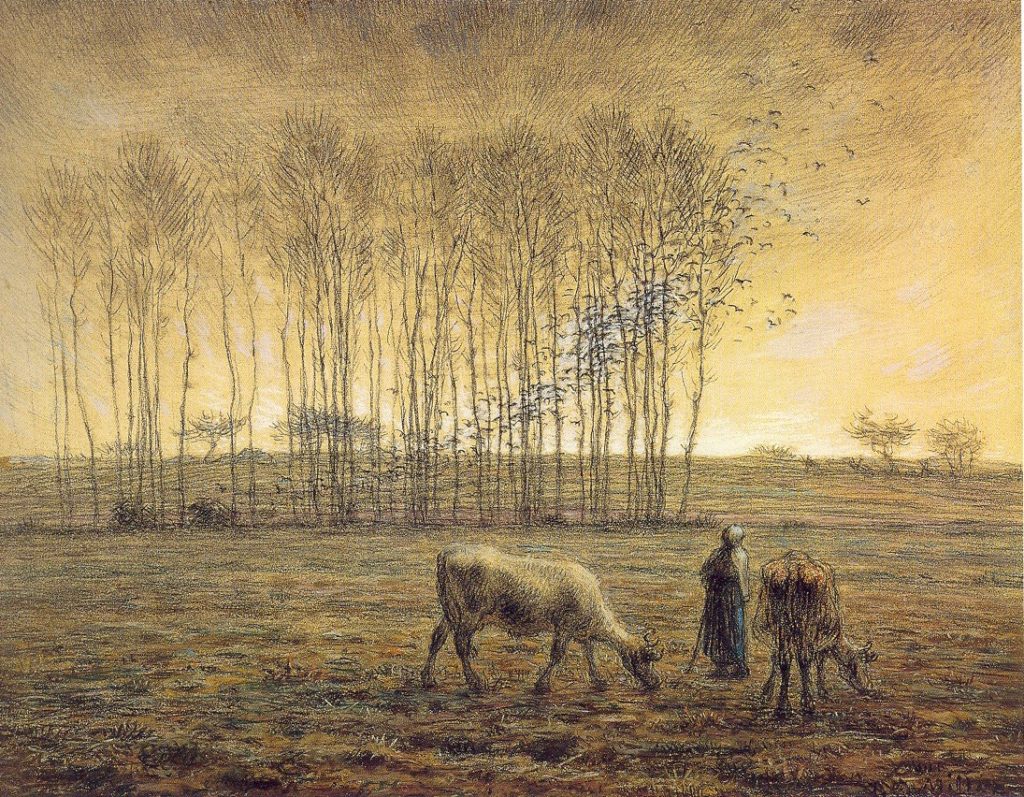
Millet, Flight of Crows
The French painter Millet is known for his depictions of rural laborers and the hardships of rural life. His most famous work, The Sower, is in the Musee d’Orsay in Paris.
His works weren’t popular at the time. Critics thought they were crude or politically motivated.
Henry Frick purchased ten pastel works on paper by Millet. In Flight of Crows, captures the setting sun, which illuminates the horizon. Against that is a flock of birds. With a subtle use of color, the piece poetically invokes a fall day.
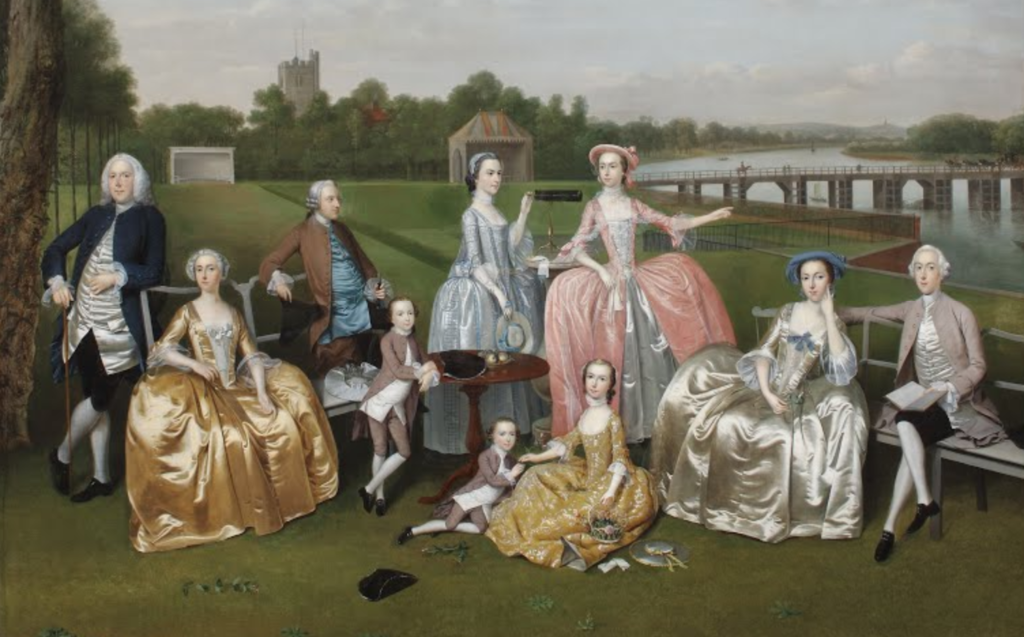
Devis, Sir Joshua Vanneck and His Family
The English artist Devis specialized in what are known as “conversation pieces.” This painting depicts the Vanneck family on their estate outside London.
This style of painting was popular in 18th century England. The group portraits were meant to appear more natural than formal portraiture.
Sir Joshua Vanneck, a wealthy merchant, is shown at the left of the painting. With him are his six children, his two sons-in-law, and his sister. (Vanneck’s wife died two years prior to the date of this painting.)
Devis’ figures look a little doll-like and their heads are proportionally too large. But the artist captures the beauty of their satin finery masterfully.
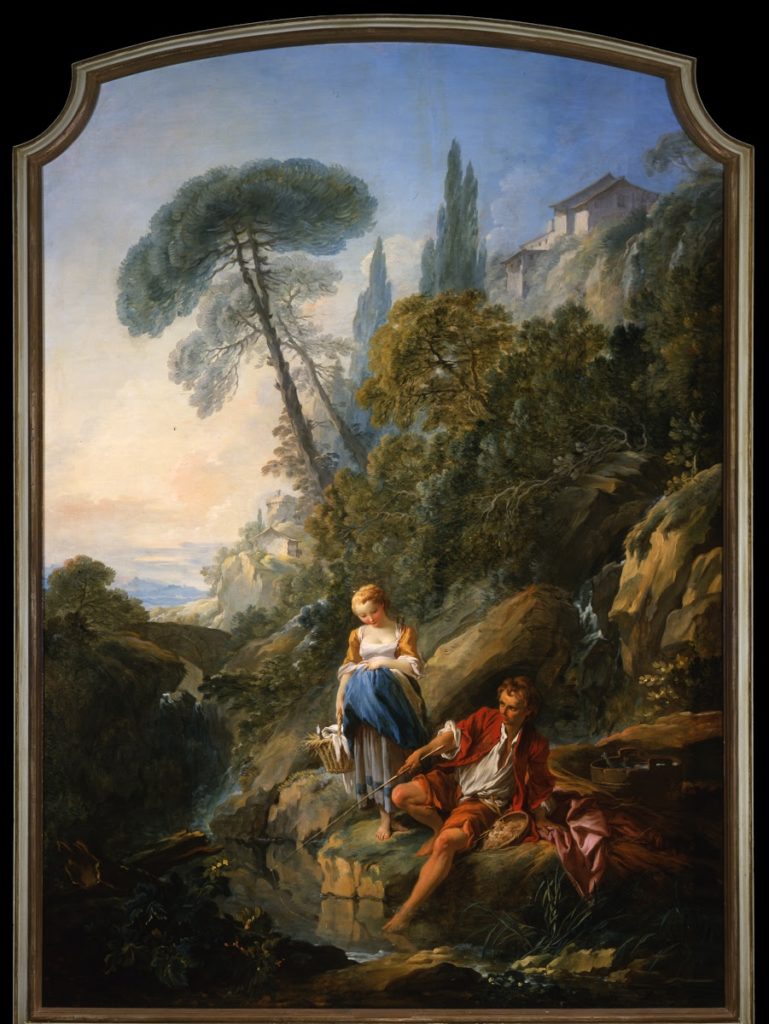
Boucher, A Peasant Boy Fishing
Boucher was one of the leading artists of the French Rococo style. He was a young man at the start of an illustrious career when he painted this pastoral. He went on to become the First Painter of the King in 1765.
Boucher was the most prolific artist of the French Rococo. His style of painting was decorative and charming. But his art works were also robust, voluptuous, and full of energy.
This large scale panel painting is nearly 8 feet tall. It falls into the genre of romanticized “pastorals.” Pastorals were idealized visions of country life, which were popular with French aristocrats.
The Boucher painting depicts a couple in the bloom of youth. They relax and flirt in an idealized landscape.
The feathery umbrella-like trees are more blue than green. When Boucher found nature wanting, he simply added his own touches of color and light.
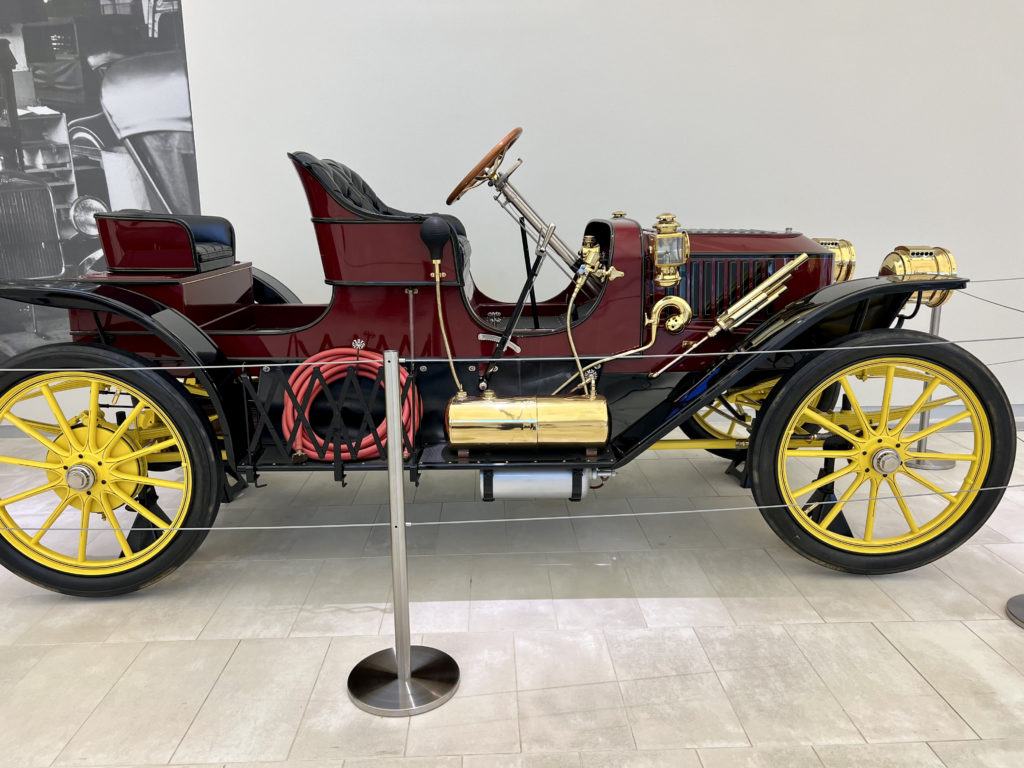
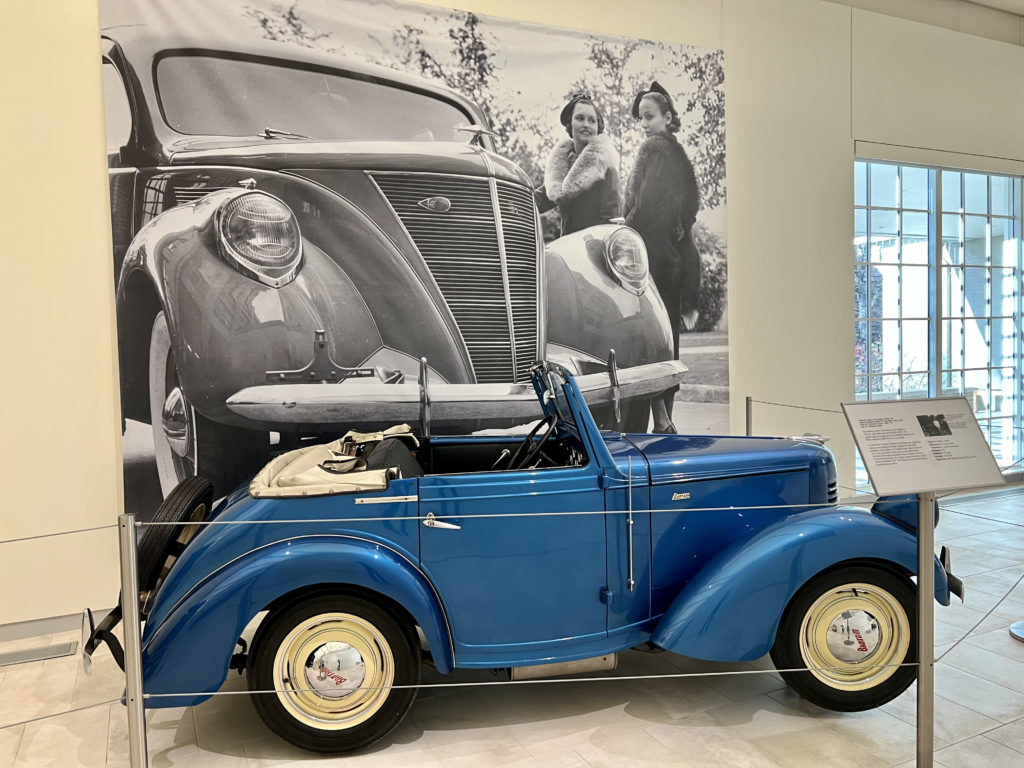
3. Car and Carriage Museum
The Frick’s Car and Carraige Museum was opened in 1997. At the turn of the 20th century, the development of the automobile profoundly changed American life.
In this boutique museum, visitors can travel back to the time of carriages. You can learn about Pittsburgh’s role in the developing automobile industry.
Fine horses and fashionable carriages were “must haves” for wealthy families of the Gilded Age. And you can admire the Frick family carriages and Helen Clay Frick’s automobiles.
Among the cars on display are a 1914 Rolls Royce Silver Ghost and a 1931 Lincoln Model K Dual Cowl Phaeton. The Spider Phaeton is a Pittsburgh-made carriage.
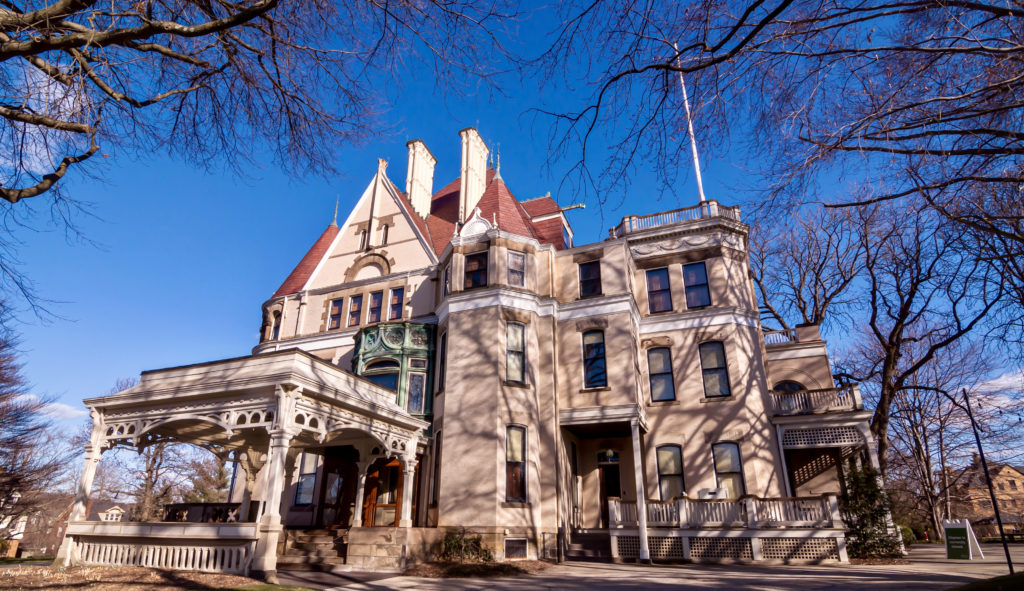
4. Clayton House
Along with his swanky NYC digs, Henry Clay Frick had a place in his birthplace of Pittsburgh. It’s an Italianate house called the Clayton Mansion. The house is on the corner of Penn and South Homewood avenues, formerly known as “Millionaire’s Row.”
Clayton House is considered one of the best preserved Gilded Age mansions in the United States. It was built in the 1860s. In 1882, Henry Frick purchased the home for $25,000.
He immediately began a $50,000 interior renovation. The Frick family purchased furnishing in what was an exotic Gothic style.
The house was wired for electricity before it was a functional technology. It was later expanded and renovated twice again. The family lived at Clayton from 1883 to 1905.
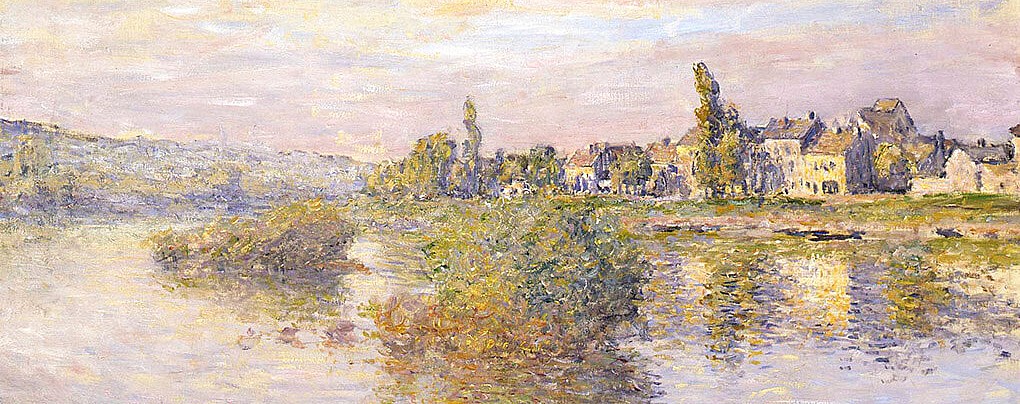
In 1905, they moved to New York City. But they kept the residence. Helen Frick had a sweet spot for Pittsburgh.
On her death, Helen bequeathed Clayton to a foundation. In 1990, it opened as a house-museum. Architectural Digest lauded it as a “triumph of restoration.”
The Clayton House is not a grand Italian palazzo like you might find in Venice. But it was still important enough that presidents were entertained there.
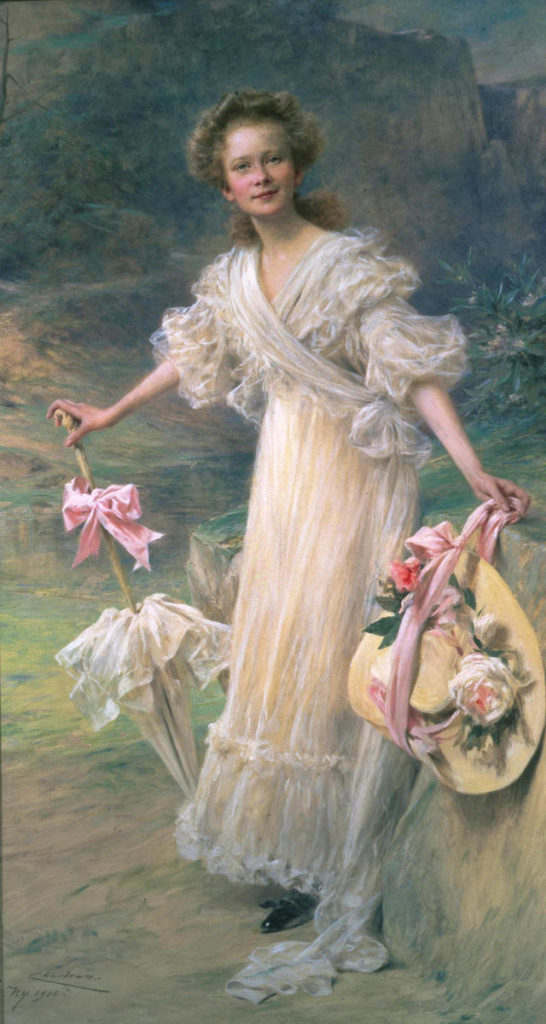
Clayton House offers a glimpse at what life was like when Pittsburgh was the center of the industrial world. You have the unique opportunity to see an in situ personal art collection within the walls of the Frick’s former residence.
The house-museum consists of 23 meticulously restored rooms. More than 90% of the original period furnishings are conserved.
The most famous painting in Clayton House is an early Claude Monet painting, Banks of the Seine at Lavancourt. It was purchased by Henry Clay Frick in 1901. When not traveling, it hangs in the sitting room at Clayton.
READ: Impressionism Trial In Normandy
The only way to visit the museum is via a docent led tour that begins at the Grable Visitor Center. Reservations are recommended. No photography is allowed inside.
Right now, only the first floor of Clayton House is open and the rest is still closed for ongoing restoration. But you can take a virtual tour here.
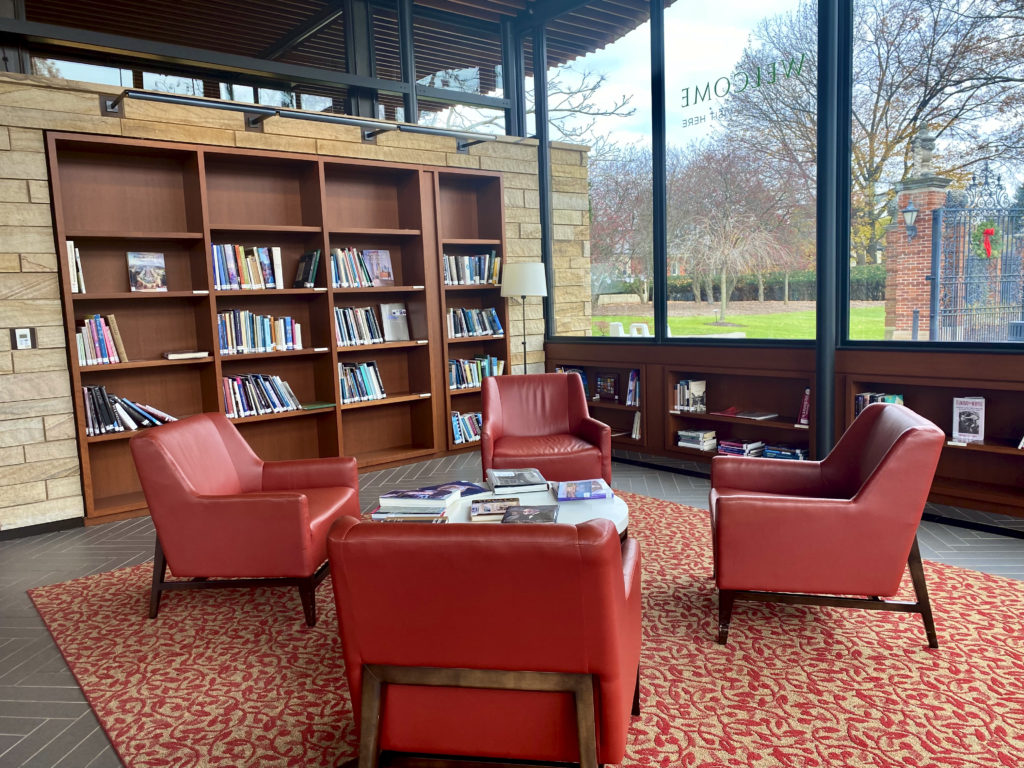
5. Grable Vistor Center
The Grable Center is well worth a stop. It’s housed in a beautiful building in the center of the Frick campus. The facades are made of high-transparency glass and Pennsylvania sandstone.
There are plenty of spaces to sit down and read. There’s a museum shop with unique selection of books, merchandise, and gifts.
As I mentioned, this is also where you buy tickets for a guided tour of Clayton House.
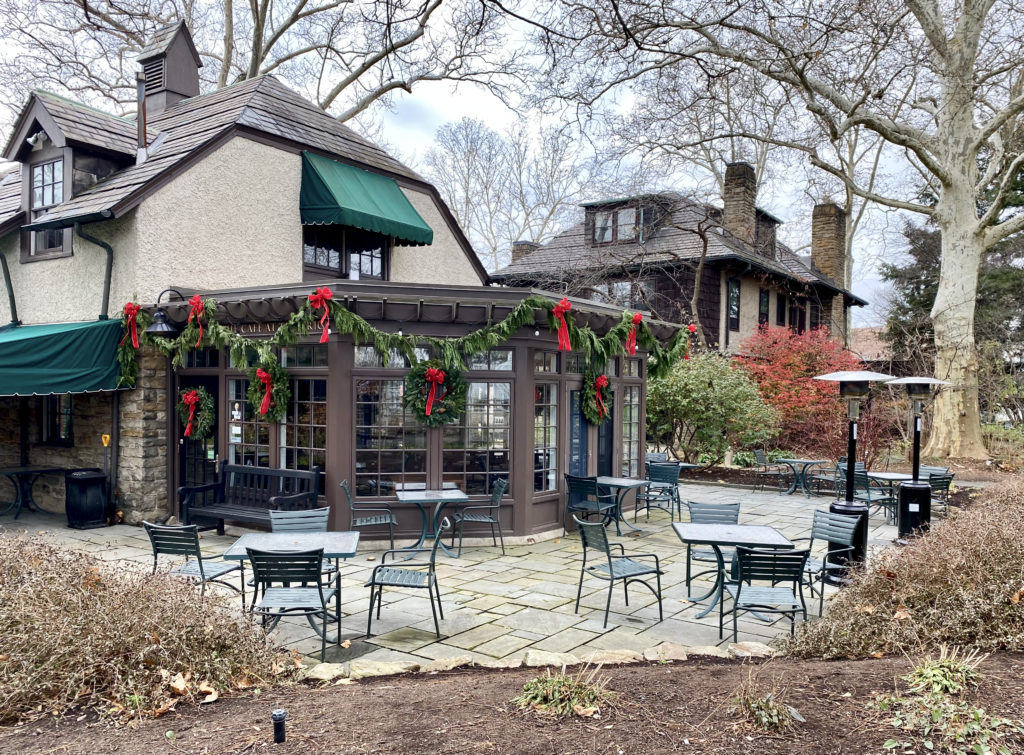
6. Frick Cafe
The Frick Cafe is a pretty spot to get a hot drink or small plate. It has indoor and outdoor seating.
The cafe was renovated and expanded during the pandemic. You can dine on gorgeous wood tabletops made by Pittsburgh artisan Tadao Arimoto.
The cafe is open Thursdays to Sunday from 10:00 am to 3:00 pm. Click here for the menu.
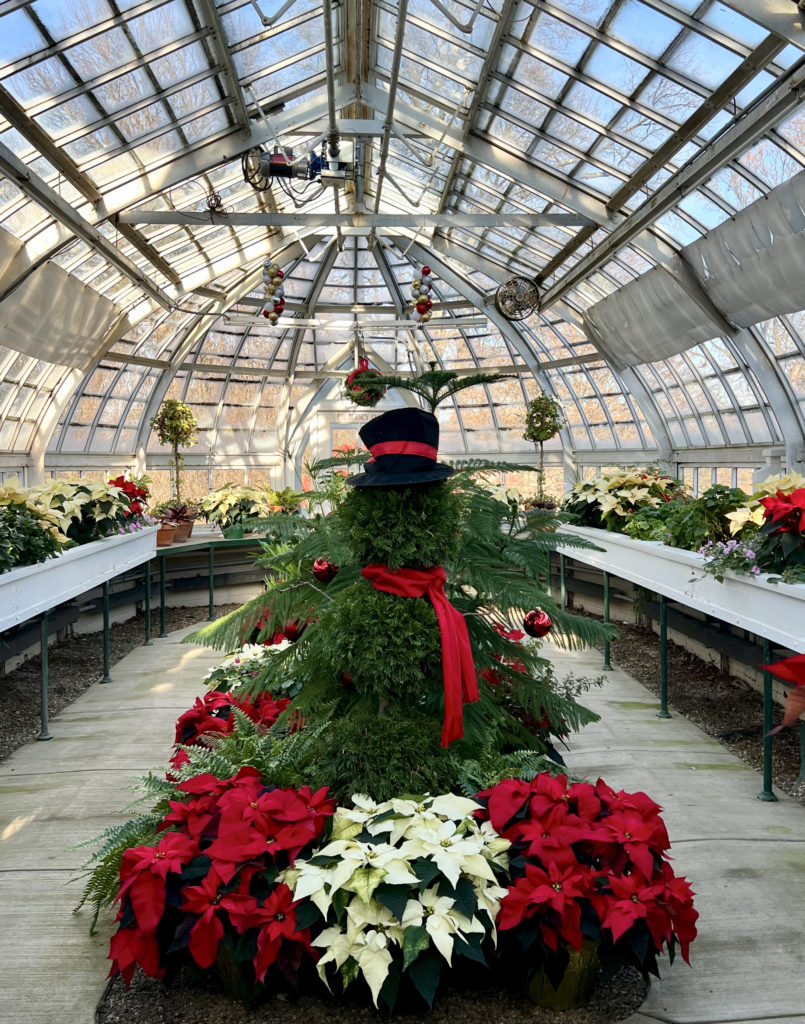
7. Greenhouse and Playhouse
There’s also an onsite greenhouse you can visit. The greenhouse is a partial reconstruction of one that the Frick family used between 1897 and the 1970s.
It was used to grow flowers and tropical plants for the Clayton House. Now, it provides ingredients for The Frick Cafe.
The architects, Alden & Harlow, also built a playhouse for the Frick children next to the mansion in 1897. Still standing today, it has a bowling alley inside.
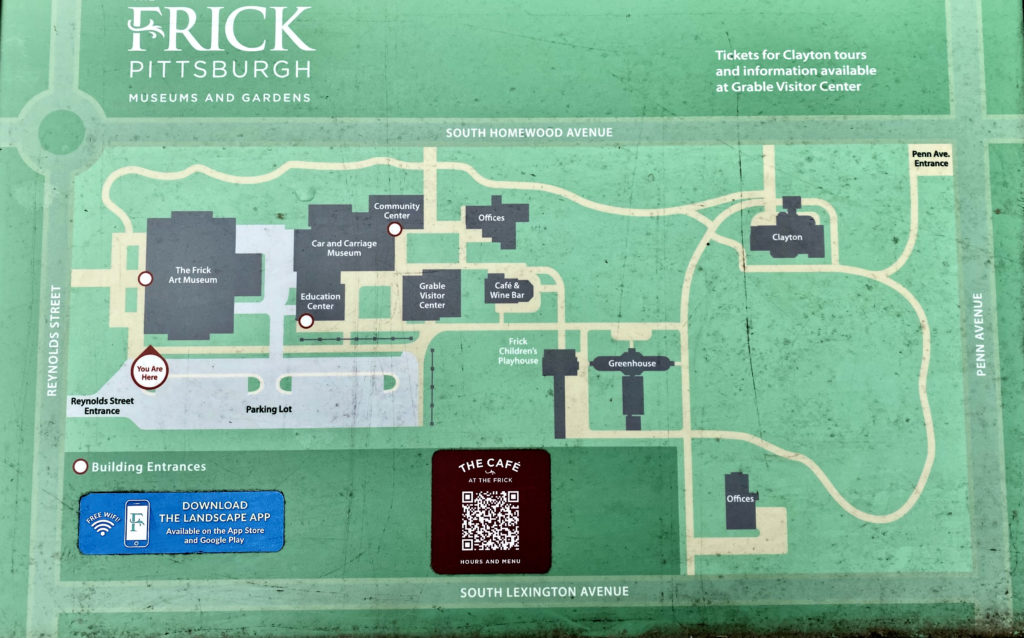
Practical Guide & Tips For Visiting Frick Pittsburgh
Address: 7227 Reynolds Street
Hours: The museum is open from 1:00 am to 5:00 pm Tuesday through Sunday. Closed on Mondays.
Entry fee: The permanent collection is free. There is a charge for special exhibitions.
Special Events: The Frick regularly hosts special exhibitions, events, and lectures.
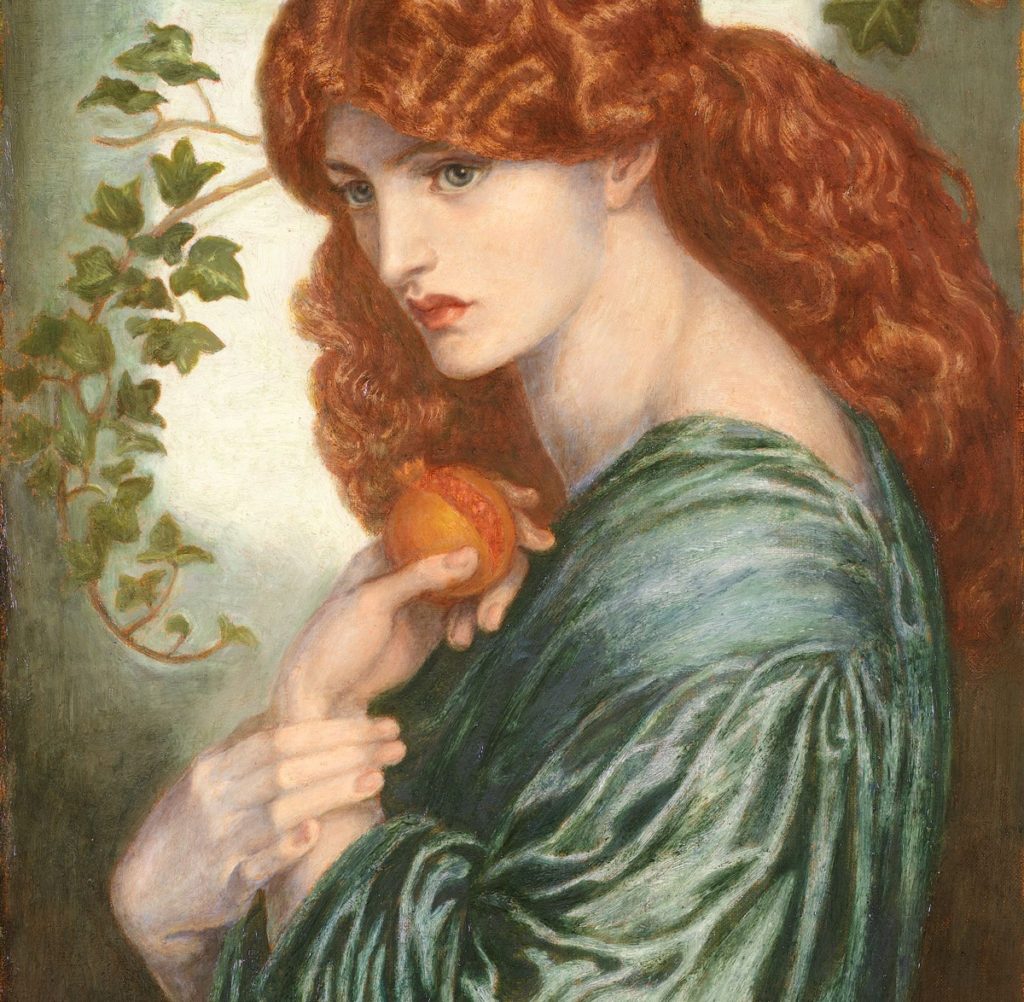
I hope you’ve enjoyed my guide to the Frick Pittsburgh. You may enjoy these other East Coast travel guides:
- Hidden Gem Towns on the East Coast
- 2 day itinerary for Philadelphia
- 3 day itinerary for Boston
- 10 day itinerary for coastal Maine
- 7-10 day itinerary for Vermont
- One week itinerary for southern New England
- Fall foliage road trip in New England
- 25 most beautiful towns in New England
- 45 amazing destinations in the United States
- Best places to visit in Massachusetts
If you’d like to visit Frick Pittsburgh, pin it for later.
